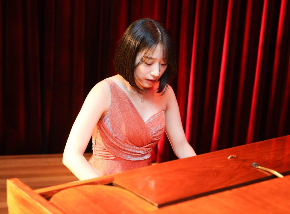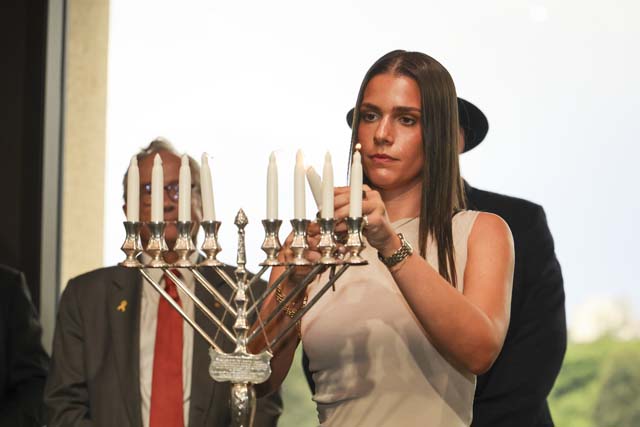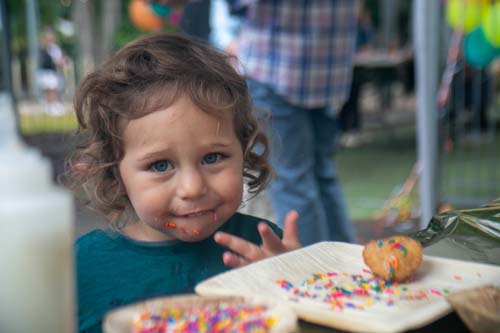Il Trittico – an opera review by Murray Dahm
Puccini’s Il Trittico is a peculiar piece. Its name is the Italian for a triptych, three panels of the same (usually religious) artwork related to one another.
As such, we should always think of the three operas that make it up (Il Tabaro (The Cloak), Suor Angelica (Sister Angelica), and Gianni Schicchi) as comprising one whole. And they are all related with death (although only two seem to have a religious theme).
For a long time, a triple-bill has been regarded as unwieldly, unlucky even – double-bills are far more common (witness Cav & Pag). This production, with each opera directed by a different director but all held together capably under the baton of maestra Lidiya Yankovskaya and sumptuous playing from the Opera Australia Orchestra should restore faith that Il Trittico should be seen complete. The production at the opera house makes this unity apparent by sharing an overall basic set between the three works (a large u-shaped rear wall with a rectangular opening in the ceiling – the other parts of the sets for each of the three operas were fitted within these. The sets (and costumes) for all three operas were designed by Michael Hankin, and this, too, gave them a visual unity. These were modern dress productions – something which worked well in Sour Angelica and Gianni Schicchi, less so in Il Tabaro; Sour Angelica’s cream nuns seemed more timeless and the modern touches to Schicchi added to the humour in both costume and set (shenanigans with closets and defibrillators).
Il Trittico premiered in 1918, only a month after the end of the First World War, at the Metropolitan Opera in New York but had been in process since 1904. Puccini first conceived of three operas based on episodes in Dante – in the end, only Gianni Schicchi was taken from that source (set in thirteenth-century Florence). The others were taken from a near-contemporary play (La Houppelande, set in 1910) and an original story set in a seventeenth-century nunnery. Although the three stories were, therefore, set in three separate places seven centuries apart, setting them all in the same period works well.
Very early on (since 1919), it was suggested to perform only two of the operas, not three. The comedy of Schicchi (the best received in the initial performances) was always on the card but whether it was to be shared with the horror of Il Tabaro or the sentimental tragedy of Suor Angelica (or a different opera entirely) has changed over the last century. Seeing all three together reiterates that they should be seen together to take the viewer on the rollercoaster of emotions and melody Puccini intended. Here we got the three in their original order (Il Tabaro, Sour Angelica, Gianni Schicchi).
Every role was well sung and well taken. Only very occasionally was a voice drowned out by the lush orchestration. On the whole, every voice could be heard, and everyone was up to the challenge. It was excellent to see so many Australian singers shine in this production, from large roles to small, showing us that we really do have the depth of talent to not need to import quite so many singers from overseas. Long may this continue.

Olivia Cranwell as Giorgetta and Viktor Antipenko as Luigi in Tabarro (Il Trittico). Photo Credit: Keith Saunders.
Il Tabaro (directed by Constantine Costi) tells of stevedores on the Seine and an unhappy marriage opened proceedings. The suggestion of the loss of a child in the marriage of Michele and Giorgetta a year before was subtly done (a baby jumpsuit among the washing). When therefore, the loss of the child was brought up in the duet between Michele and Giorgetta, where Michele powerfully demands that his wife love him again, this became the emotional and musical centre of the piece. In recent years, Michele’s aria ‘Nulla, Silenzio’ has taken centre stage but the duet was, for me, a powerhouse and it was powerfully sung by Simon Meadows (Michele) and Olivia Cranwell (Giorgetta), reflecting their tragedy and brokenheartedness – and the cause of the tragedy which would unfold (where Giorgetta has looked to the arms of another man for solace).
At the start of the opera, as the curtain rose, we first saw the characters’ feet shifting loads onto the barge. At first, the characters seemed to not be weighed down (their loads seemed light, even empty) and none of their movements seemed weighed down by the drudgery of their work. Angela Hogan as Frugola was the first character to really embody her role in body and voice and, from her entrance on (she shone in each of her roles across the three operas), the others also settled into things until the opera’s violent end. The voices of the lovers, Giorgetta, and Luigi (Viktor Antipenko), soared powerfully and made me want to hear more – but alas, in such a short opera I suppose you can’t expect an extended love duet! The horror of the original ending (where Michele murders Luigi and then forces Giorgetta to kiss the mouth of her (dead) lover one last time was toned down here – almost as if it was shied away from). The signal of a lit flame to Luigi to come aboard in the dark was spoiled somewhat by having the lamps remaining lit on the barge.

Sian Sharp as The Monitor and Opera Australia Chorus in Suor Angelica (Il Trittico).Photo Credit: Keith Saunders.
At the end of this stunning Suor Angelica (directed by Imara Savage) I leaned over to my companion and whispered ‘nigh on perfect’ – upon further reflection, I am convinced that this is a performance for the ages. All the roles were well taken from the smallest to the eponymous Angelica (splendidly sung by Lauren Fagan and wringing every ounce of emotion from the role). The scene with the Principessa (Angela Hogan) was absolutely chilling and made what was to come with Angelica’s decision to take her own life utterly comprehensible. What is more, the transfiguration at the end of the work (when Angelica sees a vision of her dead son) can sometimes be awkward or underwhelming – done with lights off-stage. Here, the appearance of the son was utterly overwhelming and I was struggling to hold back my sobs. It could not have been done better. Any criticisms are small ones – some of the smaller roles were directed to sing directly out to us in the audience – rather than address their sisters, which created a somewhat awkward disconnection to what was otherwise us viewing life within the convent – it would have only taken a small amount of repositioning of the chorus for the sisters to be both addressing us and their fellows. Nonetheless, each and every character had their own mannerisms and personalities, and this made the ensemble feel much more like a community with nuances of care or concern everywhere. Special mention to Adele Johnston as the Abbess for her authority and subtle disdain of the interruption to the nuns’ lives by the Principessa’s visit, to Sian Sharp as the Monitor, Stacey Alleaume as Sister Genovieffa, and Keara Donohoe as the Nursing Sister. The enveloping wall here, with its smooth surface seemed a little less like the stone walls of a convent, and more like those of an asylum but the contrast of the green garden in the centre worked well and the use of the earth itself at the opera’s denouement was brilliant. If you only go for Suor Angelica, this will be well worthwhile.

Simon Meadows as Gianni Schicchi, Alexander Hargreaves as Marco, Richard Anderson as Simone, Jane Ede as Nella, Adele Johnston as Zita, Angela Hogan as La Ciesca, David Parkin as Betto di Signa, and Kanen Breen as Gherardo in Gianni Schicchi (Il Trittico).
Photo Credit: Keith Saunders.
That last comment is not to take anything away from Gianni Schicchi (directed by Shaun Rennie) – the catharsis of laughter is required after the emotional torments of the first two operas. And there was laughter aplenty – again every character was well and distinctly drawn and there was always something happening on stage between the characters. A word must be said for the brilliance and contortions of the uncredited actor who played the deceased Buoso Donati – his curtain call, when he came back to life to take his bow revealed just how amazing he had been as the corpse throughout! Simon Meadows as Gianni got to show us his penchant for comedy (and so his versatility in great contrast to his Michele from Il Tabaro). The reading of the will and coming up with the scheme to rewrite it was fabulous. Every one of the family was well drawn and each had their comedic moments of gold (I may even have missed some there was so much going on, from the ‘oldest’ blowing out the candles (Simone – Richard Anderson) to Betto (a brilliantly unrecognizable David Parkin) stealing the silver and drinking the wine. The pairs of (feuding) Gherado (Kanen Breen at his ever entertaining best) and Nella (Jane Ede), and sexy La Ciesca (Angela Hogan) and Marco (Alexander Hargreaves) were endlessly entertaining. So, too, was the matriarchal Zita of Adele Johnston – with coiffured hair coming out of place as her composure unravelled. One touch I appreciated was the discovery by Zita of a male magazine with centrefold (this explained why Buoso had no children and why the hilariously busy witnesses (Pinellino (Anthony Mackey) and Guccio (Tristan Entwistle)) were shown as grieving lovers – these roles are small so the attention to their detail was great to see. The lyrical relief to all the hilarity came in the forms of Rinuccio (Thomas Dalton) and Lauretta (Stacey Alleume) – they had also been the lovers briefly seen in Il Tabaro. Lauretta’s aria ‘O mio babino caro’ is perhaps one of the most over-exposed arias in the repertoire – here Alleume made it work spectacularly in the context of the opera (to persuade her father to help the Donatis). Her exquisite pianissimo climactic phrase was refreshing – not an easy task with an aria so familiar to us all. The indication that she was pregnant, however, was unnecessary (and not present in lyric or stage instruction) – it did make Schicchi’s sudden change of heart explicable (but given the theme of Sour Angelica being a woman sent to a convent for having a child out of wedlock, this seemed like a dislocation). Dalton’s is a sweet and tender voice and this made the final duet a beautiful ending. His aria ‘Avete torto!’ was also well presented. The set worked well here – using a spiral staircase to give a second floor and plenty of spaces for characters to occupy. I liked the nod to Dante’s Inferno in one of the paintings (where the original story of Schicchi came from).
Il Trittico is not mounted particularly often – you should not miss the opportunity to see this one (remaining performances on July 11, 13, 15, 17, 19 at 7.00 pm (note the earlier start time) and a matinee on July 6 at 12.00pm.









